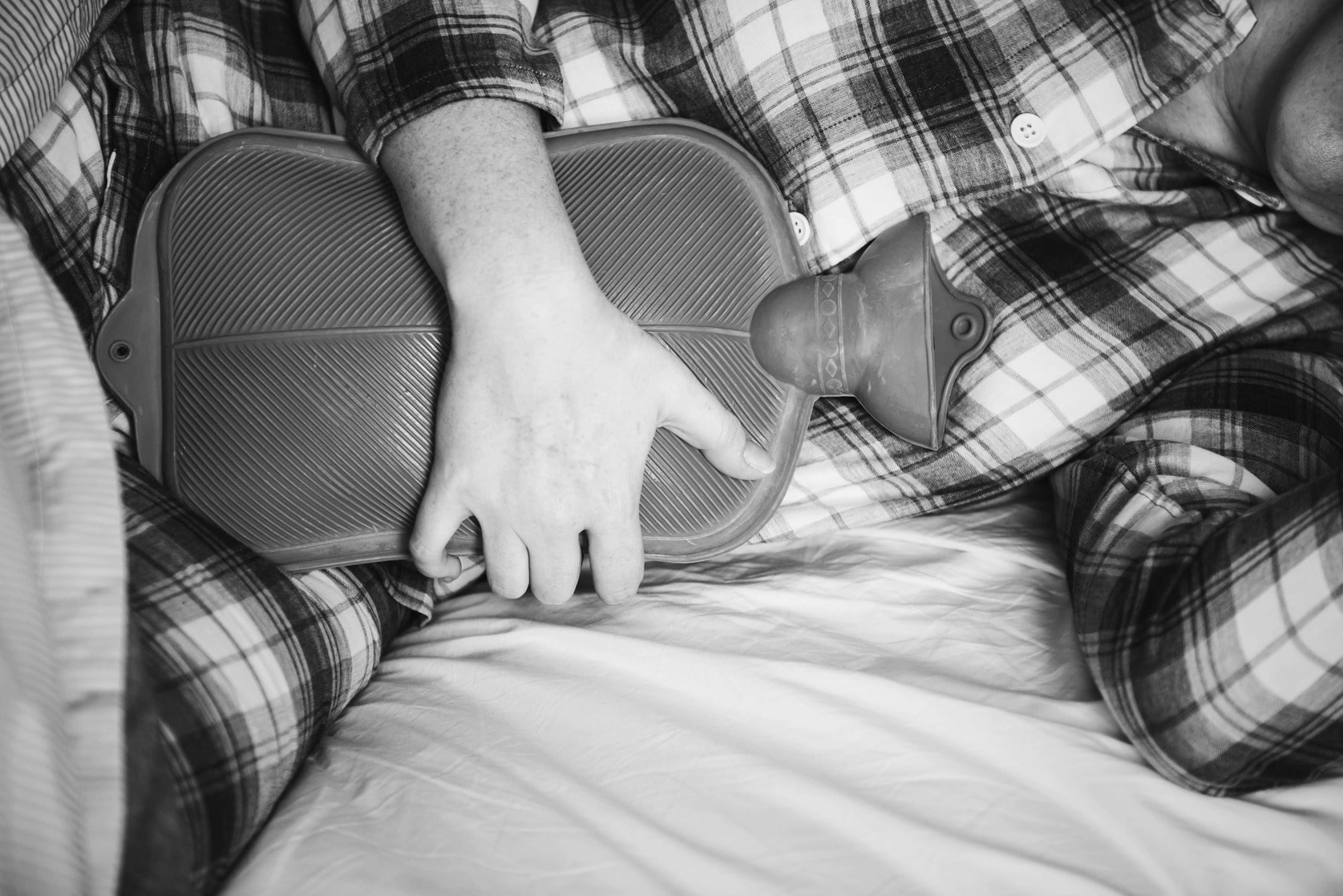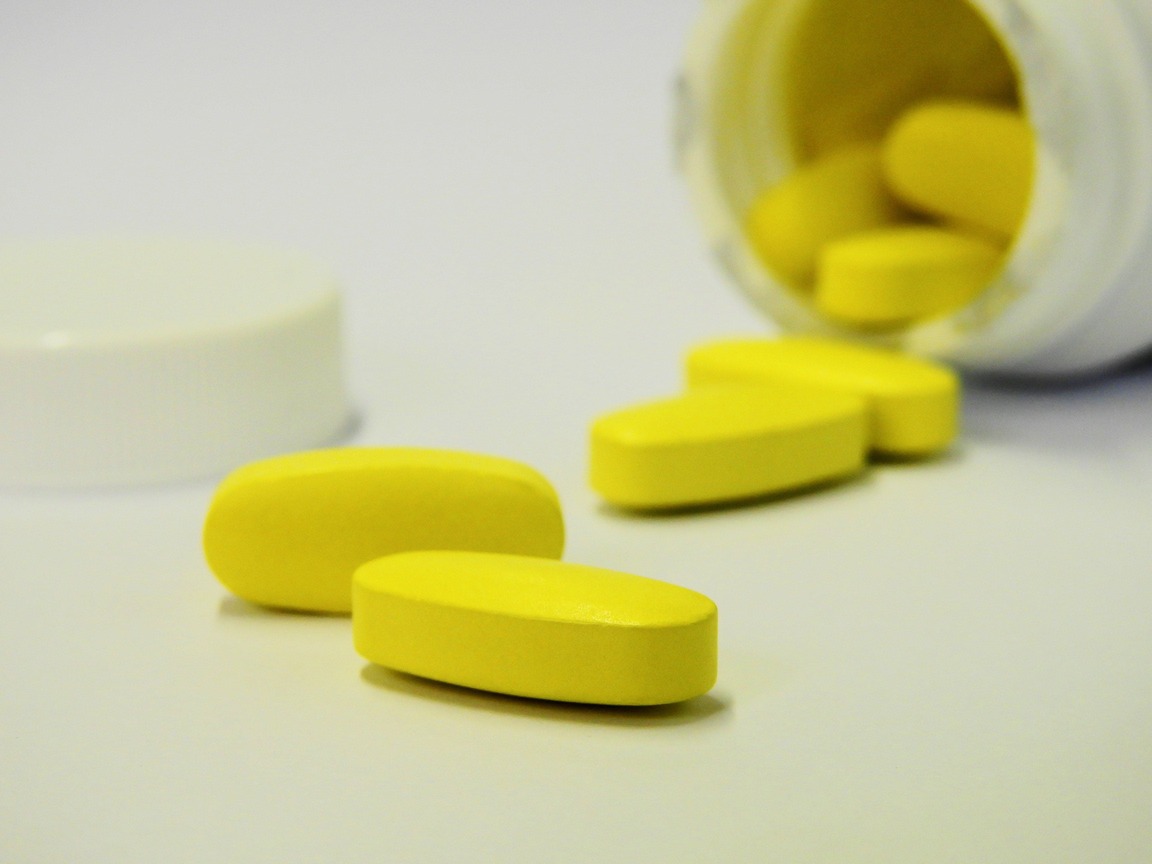Table of Contents
Constipation
A diet low in fiber, low fluid intake, pregnancy, stress, sedentary lifestyle. All these factors can cause constipation, a very annoying disorder. We teach you how to avoid it.
What is constipation?
Constipation is a delay of intestinal emptying, with few feces and hard, due to a slowing of intestinal transit (intestinal peristalsis). It is characterized by the presence of flatulence (gases) and, in some instances, abdominal pain.
Constipation is a punctual inability to evacuate intestinal contents after 10 minutes of effort or the lack of bowel movements for three days or more.
It is difficult to define this situation, as it can be considered normal between three weekly depositions and three daily depositions.
It is generally accepted that constipation entails less stool volume, more effort to evacuate them, more hardness, incomplete evacuation sensation, or lack of desire to defecate.
This is a prevalent problem whereby the general practitioner is consulted very frequently, with a prevalence between 2% and 30% of the population, according to experts in gastroenterology.
It is a particularly frequent problem in children and the elderly, and in the other stages, it is more common in women.
Types of constipation
There are mainly three types of constipation:
• Acute illness: sudden onset, caused by some recent change (a new medical treatment, stress problems, pregnancy), and ending when the causative agent is resolved. Treatment is not usually necessary because it disappears once the causative agent is controlled, without subsequent relapses. It is the common frequent type of constipation in the child population.
• Chronic constipation: definite and distant origin in time, with periodic recurrences. It is usually common in adults.
• Idiopathic constipation: unknown origin and poorly determined medication, with arbitrated efficacy.
From a medical point of belief, it is possible to distinguish.
• Functional constipation, which could correspond to an alteration of peristalsis, to decreased fluid intake, a sedentary lifestyle situation.
• Organic constipation as a symptom of some gastrointestinal diseases such as obstructions, tumors, hernias, and so on.
Causes of constipation

The origins of constipation are very varied, so this condition requires the follow-up of a healthcare professional to determine the most appropriate treatment in each specific case, and avoid worsening the disease, or the appearance of side effects due to misuse of the procedure.
The main causes of constipation are:
- Inadequate lifestyle, characterized by:
- Stress.
- Diet low in fiber and liquids; especially water, as drinks with gas or caffeine (coffee, tea) can cause intestinal transit disorders.
- Little or no physical exercise. It is not necessary to perform an intense and prolonged exercise to prevent constipation, 20-30 minutes of walking at a normal pace are enough to favor proper bowel habits.
- Presence of certain conditions related to the intestine such as thickening of the intestinal wall, inflammation, tumor presence, irritable bowel syndrome. If constipation is due to any of these causes, no treatment should be initiated without consulting a doctor, as the use of natural laxatives or medications could mask the disease and aggravate it.
- Hypothyroidism or diabetes: In these cases, constipation appears as a symptom of these diseases that are not directly related to the intestine, or it manifests itself as a side effect of some medication. It is advisable to go to the specialist who is monitoring diabetes or hypothyroidism, to study and assess the problem.
- Neurological diseases: people with dementia, Parkinson’s, multiple sclerosis, stroke. May present with constipation due to secondary involvement of the nervous system responsible for intestinal function.
- Pregnancy.
- Senescence.
- Use of certain medications. Very common opioid analgesics such as tramadol, fentanyl, buprenorphine, morphine, and so on. Others such as antacids, antidepressants, and some medications for high blood pressure.
Symptoms of constipation

Constipation itself is a symptom if it is part of a disease such as organic constipation. However, the presence of this situation should be investigated by the doctor to try to reach the ultimate cause of constipation.
The patient usually refers in different ways to this problem. It can describe that its evacuation is less frequent than before, it evacuates less content, and with more hardness, it requires an effort to obtain it, or it does not feel to have evacuated completely.
The onset of symptoms is an essential factor to assess whether it is acute or chronic constipation, the latter being less worrying.
Other symptoms that will give valuable information to the doctor about whether or not you suffer from constipation will be the presence of pain, not only in the abdominal region as a result of incomplete emptying but a pain in the anal region, which can be accentuated if the stool is significant hardness.
This fact involves, in many cases, the formation of hemorrhoids. And in this context, the presence of small bleeding may be frequent at the end of defecation.
In situations of acute constipation, the individual will notice an increase in the abdominal perimeter, and when there is an obstructive cause (tumors, hernias) may present vomiting, lack of appetite for food intake and absence of ventilation.
Constipation Diagnosis
The accompanying data referred by the person who suffers from constipation will lead significantly towards the final diagnosis (pain, bleeding, vomiting, fever). The examination of the doctor can reveal some mass when palpating the abdomen, and in the rectal touch(digital examination of the rectum) it can be seen the presence or absence of feces in this section of the intestine, impacted feces (fecaloma) or even tumors can be palpated.
The blood test can provide information in cases of constipation secondary to endocrinological disorders, and in the case of suspected tumors since iron loss anemia is usually associated with this problem.
The plain abdominal radiography helps confirm the presence of abundant feces throughout the colon, but also allows rule if the cause is obstructive by the presence of a small bowel obstruction inflamed.
At present, when the suspicion is of organic constipation, that is to say, the consequence of some obstruction, for example, the colonoscopy has removed the opaque enema that was performed previously, since it allows the diagnosis and the biopsy in cases of tumors. The CT scan can complement these studies.
Non-pharmacological treatment of constipation

If constipation is determined by inappropriate lifestyles, before starting any pharmacological treatment, it is advisable to adopt a series of (non-pharmacological) measures aimed at solving the problem of constipation and preventing future episodes, such as:
- Control stress: situations occur at work, home, family, and social relationships. In which it is difficult to control the level of stress, but small changes can be made in everyday life to facilitate the work of the intestine. It is very important to establish regular meal times, get enough sleep, and distribute the time available to, as far as possible, avoid the rush and stress when carrying out daily tasks.
- Increase the consumption of liquids: it would be advisable to consume at least two liters of water per day (eight glasses), although you can substitute a small amount of water for other liquids such as natural orange juices or apple juice (they are good laxatives), and so on, without forgetting that water is the only drink that doesn’t add calories.
- It is important to avoid or at least reduce the consumption of carbonated beverages, soft drinks, coffee, tea, and alcoholic beverages.
- Perform gentle exercise daily: establishing a daily routine of 20-30 minutes of walking at a normal pace can achieve an improvement in constipation.
- Follow good regular bowel emptying habits: the intestine, like other organs of the body, can and should be accustomed to certain habits. The desire to go to the bathroom should not be suppressed, and it is convenient to get used to defecating at about the same time. To achieve this goal, at first, it will be necessary to go to the bathroom without desire but, progressively, the intestine will acquire the habit of working at that time. This aspect is important to instill in the little ones to avoid future problems.
- Increase fiber intake: it is shown that low fiber intake in the daily diet is one of the main causes of constipation in a high percentage of the population. Fiber is present in the composition of many foods, and its main effects are:
1. Maintains normal and healthy levels of cholesterol and triglycerides, reducing blood levels of triglycerides, cholesterol, and LDL-cholesterol (directly related to cardiovascular risk and, consequently, harmful), and improves HDL-cholesterol levels (inversely related to risk cardiovascular).
2. It contributes to the moderation of glucose levels.
3. It helps to keep the balance of the intestinal rhythm.
4. It produces an increase in fecal frequency and volume.
5. Prevents atrophy of the intestinal mucosa.
6. It facilitates the increase of Bifidobacterium. (Positive pre-biotic effect).
7. Prevents fat accumulation.
8. It does not cause problems related to excess intestinal gas: slow fermentation does not produce flatulence.
Fiber types and daily intake recommendations
According to its degree of water solubility, fiber is classified as:
- Soluble fiber: includes pectins, gums, mucilages, and some hemicelluloses. Pectins are found mainly in fruits and vegetables, especially apples, oranges, and carrots. Another form of soluble fiber is found in bran, oatmeal, barley, and legumes such as beans, lentils, and beans. The influence of this fiber in the digestive tract is related to its ability to retain water and form gels.
- Insoluble fiber: This type of fiber mainly includes cellulose, lignin, and some hemicelluloses. The foods that contain the largest amount of this fiber are whole grains, such as bran layers of grains such as wheat.
According to different official organizations, and endorsed by several scientific studies, daily fiber recommendations are :
- Adults: from 18 years, the recommendations are 20-35 g / day, varying depending on the physiological situation; thus, the pregnant woman will need a higher fiber intake due to the tendency to constipation during pregnancy.
- The same applies to the elderly, in which a high fiber intake and an increase in fluid intake is recommended, due to the intestinal slowdown that occurs at this stage of life.
- Children and adolescents: the recommendations in these patients are varied, as there is no specific pattern. It has generally been accepted, and more or less adapts to the recommendations of each official body, a contribution of fiber in children following rule: fiber contribution = age of the child + 5g as minimum daily contribution and age + 10g as a maximum contribution.
- However, fiber needs, especially after age 9, are not the same in boys as in girls. The following table, designed by the American Heart Association, summarizes fiber needs based on the age and sex of the child, although these recommendations are indicative and will always prevail the doctor’s advice.
Pharmacological treatment of constipation

If the variations introduced at the nutritional level have not achieved the desired objective, the use of laxatives can be used as an external aid to the problem of constipation.
Laxatives are agents that, through different mechanisms, achieve an increase in the fecal bolus (mechanical laxatives) or facilitate intestinal emptying, by increasing peristalsis of the large intestine (contact laxatives or irritants).
Laxatives are always punctual, once ruled out that the origin of constipation is associated with some serious pathology.
In addition, it is not advisable to use more than seven consecutive days in the case of natural laxatives, as they can cause diarrhea.
In addition to the fact that the constant use of laxatives causes habituation at the intestinal level, which eventually causes a much greater problem of constipation that was initially intended to correct.
Contact laxatives
They act, causing a small irritation at the intestinal level that reflects, in a reflex way, an increase in intestinal mobility that facilitates the expulsion of the fecal bolus. They take effect quickly (approximately in a couple of hours).
Because its mechanism of action is based on intestinal irritation, although such irritation is very mild, prolonged use (no more than 7 days) is not recommended, with periods of rest being necessary.
Otherwise, tolerance may appear (the dose needs to be increased to obtain the same result), dependence (the intestine becomes accustomed to the presence of these laxatives.
If the administration is suspended, a serious constipation problem develops) and In exceptional cases, they can cause chronic diarrhea, with abdominal pain.
The main ones are:
1. Rhubarb (Rheum palmatum): the root and rhizome are used.
2. Sen (Cassia senna and Cassia Angustifolia): the leaves are used.
3. Frangula (Rhamnus frangula): the powdered bark is used.
4. Cascara sagrada (Rhamnus purshiana): as in the case of the frangula, the powdered bark is used.
5. Aloe (Aloe vera, Aloe barbadensis, and Aloe ferox): a juice obtained from the leaves is used.
6. Ricin (Ricinus Communis): the oil obtained from the extrusion of the seeds (crushed of the seeds) is used. This oil is very rich in ricinoleic acid, and derivatives are ricinoleic acid. It is the only contact laxative that acts at the level of the small intestine, and not the large intestine, like the previous ones.
Mechanical laxatives
Its composition includes substances with great swelling capacity in contact with the water of the intestine. Which causes an increase in its mass and, with it, an increase in the mass of the fecal bolus.
When the fecal bolus increases in volume, the pressure is produced on the intestinal walls. With the consequent abdominal distension (feeling of fullness), and reflex stimulation of the intestinal mucosa.
This stimulation causes an increase in intestinal peristalsis (intestinal motility) and, finally, the expulsion of the fecal bolus.
The fact that they absorb water, when sliding along the intestine they leave gel film on the intestinal mucosa. In addition to facilitating the expulsion of the intestinal mass has a protective effect on it.
These laxatives are of choice if the problem of constipation is accompanied by pain when performing the defecation effort (hemorrhoids, anal fissure).
However, it should be borne in mind that the use of laxatives requires an increase in daily intake of water.
So that they can swell and carry out their function. They absorb the water present in the large intestine and dry out the mass intestinal. Which aggravates the problem of constipation.
The effect of these laxatives usually appears at 12-24 hours after taking the product, with a mild to moderate intensity. In the case of chronic constipation, a few weeks of treatment may be necessary to achieve the desired effect regularly.
Laxative Effect
In addition to the laxative effect, they have a satiating effect, by favoring the sensation of filling by increasing stomach mass and, by adsorbing intestinal water.
They also use in case of diarrhea, to remove excess intestinal fluid (intestinal regulators)
Although they should only be used in very exceptional cases for this pathology, and never associated with an anti-diarrhea.
However, these laxatives should not be practiced without prior professional advice from the doctor or pharmacist.
Together with water and other elements, they can absorb part of the dose of other medications taken by the patient. And the gel layer created in The intestine can hinder its absorption.
This group of laxatives includes:
• Different families of algae: Rich in alginic acid (brown algae of the Fucus, Laminariaand Macrocistys family, of which the algae talus is used) or in carrageenans (mainly Chondrus crispus ). Algae are rich in iodine, so you have to be cautious if you have thyroid problems.
1. Ispagula (Plantago ovate): Its seeds are used.
2. Zaragatona (Plantago psyllium): Like the Ispagula the seeds are used.
3. Llantenes (Plantago mallor and Plantago lanceolata): Unlike the previous ones, the entire aerial part of the plant is needed.
4. Flax (Linum usitatissium): The seeds are use.
5 Malva (Malva sylvestris): Its flowers and leaves are use.
6. Altea (Althea officinalis): The roots are used.
The recommended guideline for the phytotherapeutic treatment (with plants) of constipation, which has not remitted with adequate dietary treatment and the modification of daily habits, is:
- The use of mechanical laxatives is advise.
- If it fails, contact laxatives should be used
- Ultimately, the alternation of contact laxatives with mechanical laxatives should be assessed.
In addition to the natural laxatives described, there are other laxatives on the market, of equal or greater effectiveness, but with a higher risk of producing side effects due to their greater aggressiveness towards the intestinal tract, which requires that their use be timely and only in those cases in which other laxatives have not been effective, or in cases of urgency (enemas).
They are always of professional advice and follow-up, due to their high risk of tolerance and dependence:
Emollient laxatives
Paraffin: it is used as a treatment and prevention of constipation in patients who cannot make intense defecation efforts (hemorrhoids, anal fissures, postpartum). It should be used in short periods, regulating the dose to one dose every 2-3 days.
Although it is not absorbed at the gastric level. It can facilitate the absorption of other products administered at the same time and can cause a lack of fat-soluble vitamins (A, D, K, E). It should not be given to children under six years old, or to bedridden patients or those with swallowing problems.
Stimulant laxatives
They are very effective but very irritating to the intestinal mucosa. Punctual use.
• Bisacodyl: oral and rectal route.
• Sodium Picosulfate: risk of allergy.
Osmotic laxatives
Good efficiency and safety profile. They can cause non-serious gastrointestinal discomfort and flatulence. An excessive dose can cause diarrhea.
• Lactulose.
• Lactitol.
Rectal laxatives
They are suppositories and enemas. Risk of rectal damage due to the irritating action of the medication itself, or during its application. They are of regular use.
1. Bisacodyl.
2. Glycerol: glycerin suppositories.
3. Enemas: they are several components associates with intense evacuating action.
Other evacuents: there are different preparations available in the market for oral administration. They are usually used before a diagnostic test (colonoscopy, rectoscopy). But occasionally they are used as an evacuant in cases of very severe or severe constipation.
Some specific cases of constipation, for example by an intestinal volvulus, require the aspiration of intestinal air by colonoscopy to undo the torsion and solve the problem.
In other very severe cases and without response to previous measures, manual removal of fecal material in hospital may require.
Helpful Resources:
1. Acai Bowl
2. Is it Safe to Mix Benadryl and Alcohol – Health Advice
3. 16 Properties and benefits of green tea for a healthy life


I really enjoyed reading this article. I will come back again in the future to check out some of the other articles.